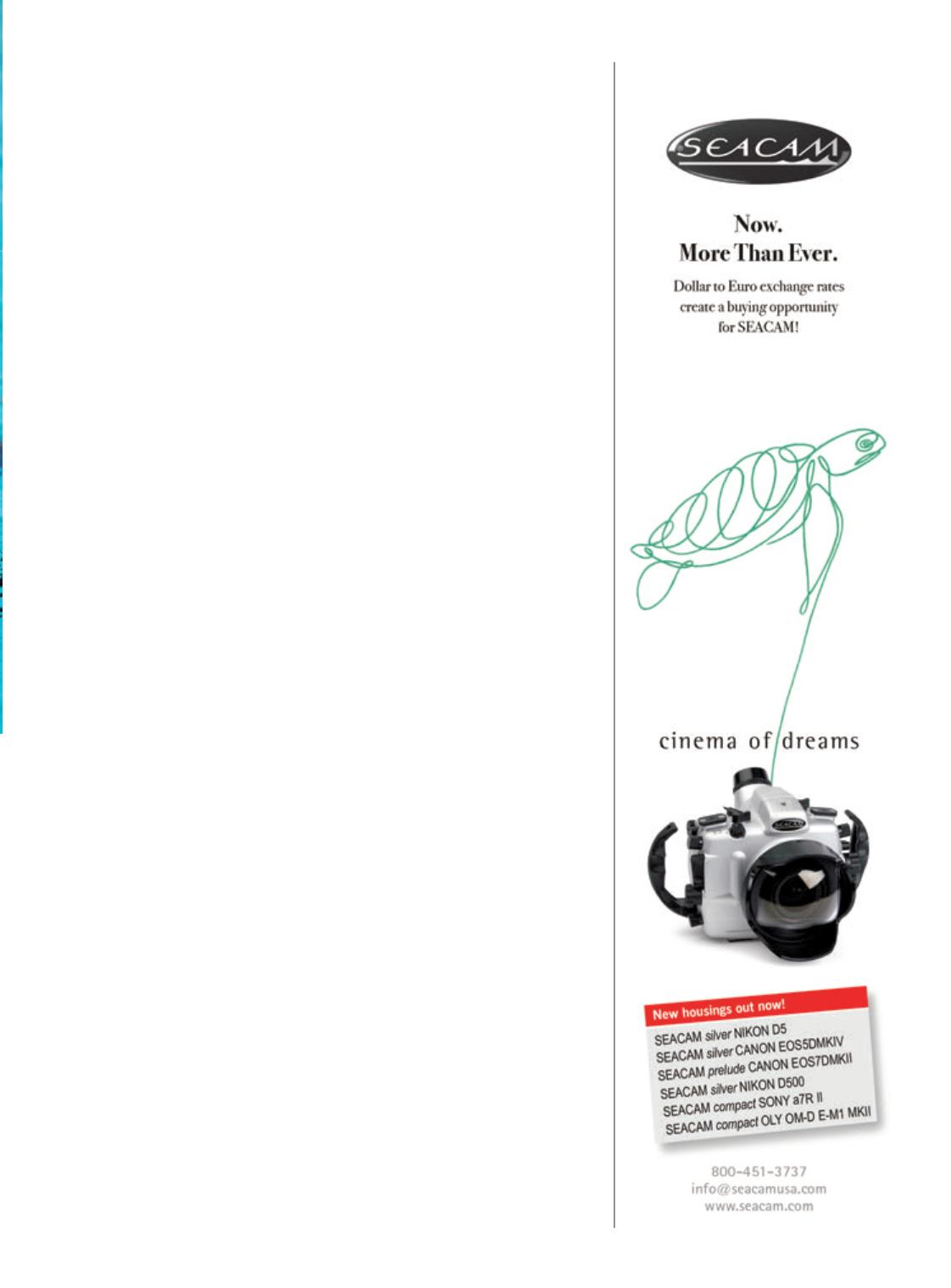

world experience to really make it
sink in. For me that revelation came
during a recent spearfishing trip.
I was invited out on a coworker’s
boat with him and his two sons.
It was a routine trip for us to the
50- to 60-foot reef off Palm Beach,
Fla. Conditions were great: The
current was slack, and visibility was
top to bottom. We dived in a three-
man rotation with a designated
boat operator. After a few hours of
diving and a couple of nice fish in
the cooler, we decided to move to a
stretch of artificial reefs in the 85-
to 90-foot range.
The conditions were nearly the
same, but the increase in depth
warranted the use of a float line
so we could track each other.
Each of us had made a handful
of drops with no issues when my
coworker’s 16-year-old son made
his last dive of the day. It was a
dive that he had already made a
few times that day, but as soon as
he surfaced at the end of his dive
I knew something was different.
His lips were bright blue. He
took a couple of breaths before
he stopped breathing and began
convulsing — a loss of motor
control known to freedivers as
a “samba.” By the time I reached
out to grab him, he had blacked
out and slumped forward in the
water. I immediately floated him
on his back to protect his airway,
removed his mask and attempted
to promote the resumption of
spontaneous breathing as I had
been trained. Almost immediately
he began to breathe again, and he
slowly regained consciousness.
The boat ride home was mostly
silent, each of us immersed in our
own reflections about what might
have been. My coworker’s son clearly
experienced a dawning realization
that he was not bulletproof, a
stripping away of the all-too-
common idea among freedivers that
the hazards of the sport are dangers
only to novice divers or are brought
on by extreme circumstances. By
the time the boat reached the inlet,
the gravity of the situation had really
sunk in. Astonished, the young man
stated out loud that if he had been
diving alone he would be dead. In
lieu of a response that might have
been a bit more comforting, I went
with the hard truth: “Yes. Yes, you
would be dead.”
I had already been humbled by
similar events: blacking out during
static apnea and experiencing a
samba during a line dive session in
training. These events were enough
to change almost every aspect of
the way I dive, from gear selection
to how my partners and I rotate.
It was also enough to make sure
that there is always dialogue with
my partners about what to do in
the event of a blackout or samba. I
always tried to practice safety while
spearfishing, but I did not always
make it the top priority.
This event, however, happened
in the real world. When I had
blacked out, it was in a controlled
environment, relatively speaking,
and I was pushing myself to the
limit because I knew trained
professionals were there to assist
me. When I blacked out I did not
go through the emotions we all felt
this day.
Enlightened by these events, we
began by running through different
safety scenarios in the water on
our next trip. It was a great way to
switch the focus from spearfishing
as an overarching objective to
safety first and hunting second.
Everyone dived better that trip,
which I attribute directly to our
safety session. In a sport largely
affected by mental disposition,
the peace of mind from knowing
that your partners are capable of
being there for you in a pinch is an
immeasurable asset.
AD
ALERTDIVER.COM|
53


















